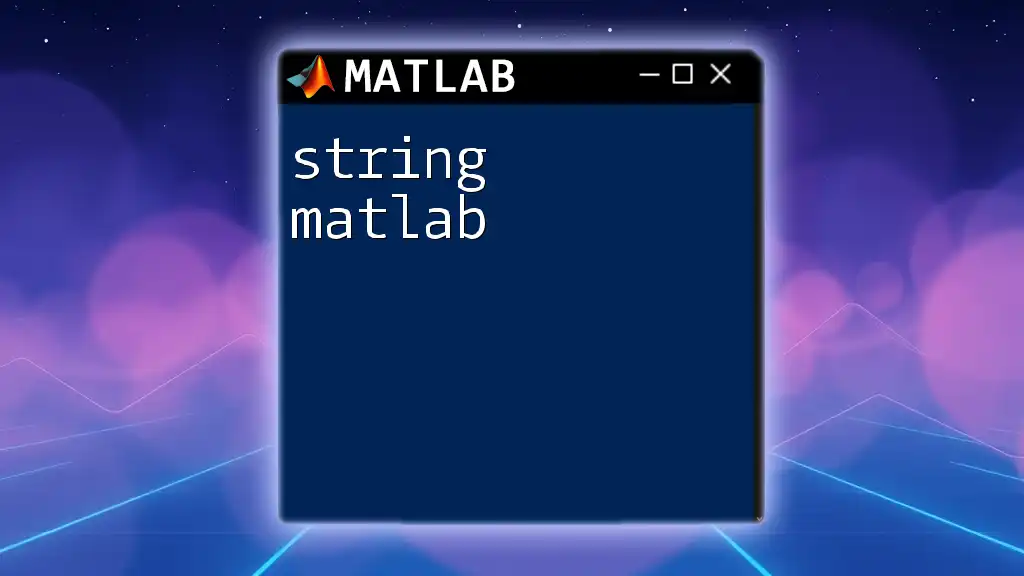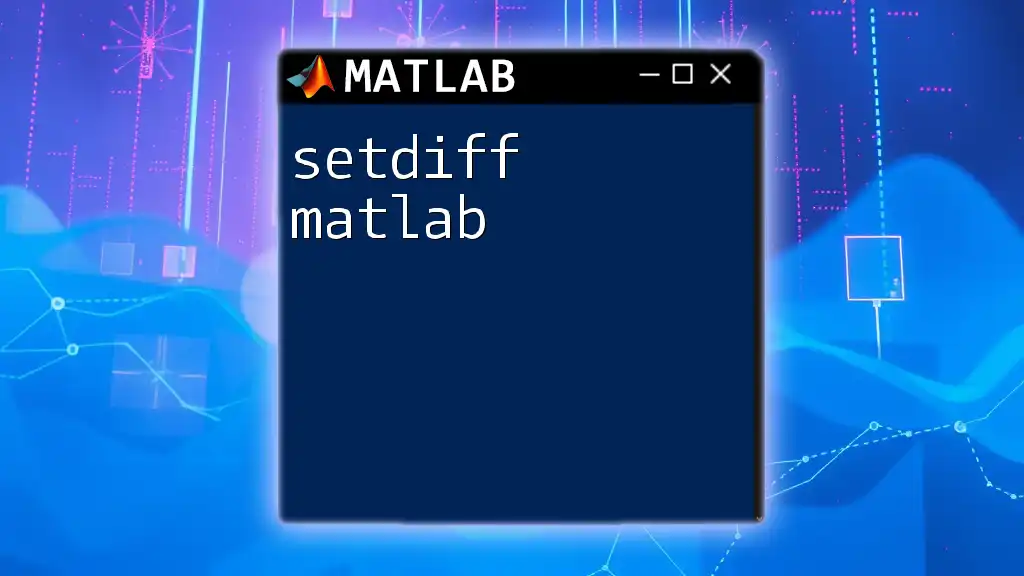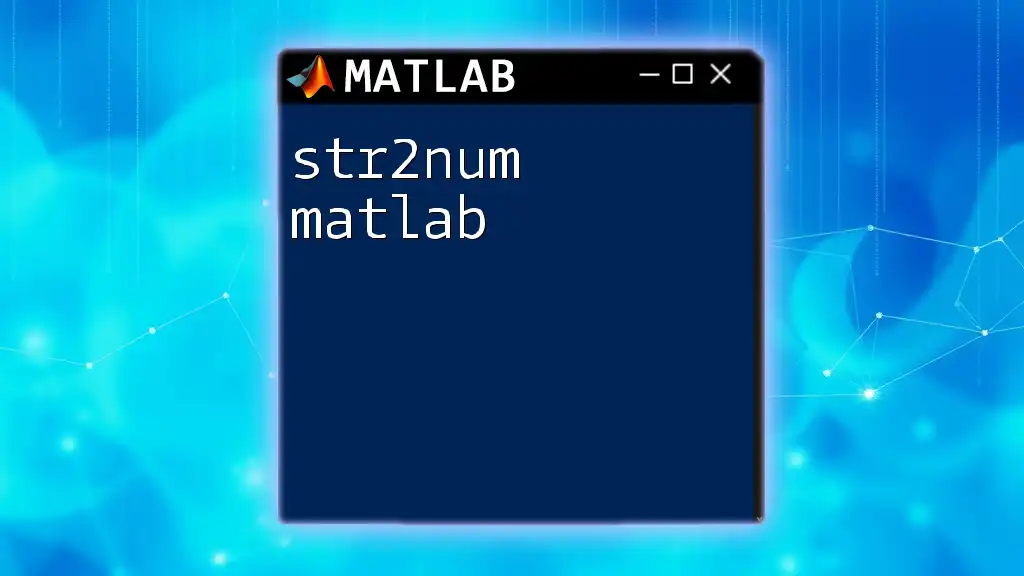The `stepinfo` function in MATLAB is used to obtain step response characteristics for a dynamic system, such as rise time, settling time, and overshoot.
sys = tf(1, [1, 2, 1]); % Define a transfer function
sInfo = stepinfo(sys); % Obtain step response characteristics
disp(sInfo); % Display the step information
What is `stepinfo` in MATLAB?
The `stepinfo` function is a powerful tool used in MATLAB for analyzing the transient response characteristics of linear systems. When dealing with control systems, understanding the behavior of system responses, especially in terms of their time-dependent characteristics, is crucial. The step response is a common method for assessing how a system reacts to a sudden change in input, usually modeled as a step function.
The key performance metrics provided by `stepinfo` include rise time, settling time, peak time, overshoot, and steady-state values, which are essential for evaluating the performance and stability of control systems.

Key Parameters of `stepinfo`
Rise Time
Rise time is defined as the time taken for the system’s response to rise from a specified low percentage (usually 10%) to a specified high percentage (usually 90%) of its final steady-state value. It provides insights into how quickly the system can respond to changes.
To calculate rise time using `stepinfo`, you would use a code snippet like:
num = [1]; % Numerator of transfer function
den = [1, 5, 6]; % Denominator of transfer function
sys = tf(num, den); % Create transfer function
info = stepinfo(sys); % Get step response characteristics
rise_time = info.RiseTime;
disp(['Rise Time: ', num2str(rise_time)]);
Example: For a simple first-order system defined by the transfer function `1/(s + 1)`, you will find that the rise time is relatively short, showcasing the system's quick response to changes in input.
Settling Time
Settling time is the time required for the system's response to settle within a certain percentage (typically 2% or 5%) of the final value after a disturbance. It is crucial for determining how long the system takes to stabilize following input changes.
You can calculate settling time like this:
info = stepinfo(sys); % Assuming sys is defined
settling_time = info.SettlingTime;
disp(['Settling Time: ', num2str(settling_time)]);
Example: Consider a second-order underdamped system, such as `sys = tf([1], [1, 2, 1])`. The settling time may reflect a trade-off between fast response and stability, revealing important insights into the system design.
Peak Time
Peak time is the time it takes for the system response to reach its first overshoot, or maximum peak, after a step input. It provides insights into the transient response speed and stability of the system.
To calculate peak time, you can use:
info = stepinfo(sys);
peak_time = info.PeakTime;
disp(['Peak Time: ', num2str(peak_time)]);
Practical Scenario: In an oscillatory response, such as in systems defined by `sys = tf([1], [1, 2, 2])`, peak time will highlight how quickly the system can achieve its maximum output before settling down.
Percent Overshoot
Percent overshoot measures the amount by which the system overshoots its desired final value, expressed as a percentage. It is particularly important in assessing the stability and responsiveness of the system.
You can extract percent overshoot like this:
info = stepinfo(sys);
percent_overshoot = info.Overshoot;
disp(['Percent Overshoot: ', num2str(percent_overshoot)]);
Example Case: Analyzing an underdamped system such as `sys = tf([1], [1, 0.5, 1])` can provide critical insight into how the system is likely to behave under shock loading and improve design adjustments.
Steady-State Value
The steady-state value represents the final output value that the system approaches after sufficient time has elapsed following a step input. Understanding the steady-state behavior is vital for assessing overall system performance.
To calculate the steady-state value:
info = stepinfo(sys);
steady_state_value = info.SettlingMin + (info.SettlingMax - info.SettlingMin)/2; % Example approximation
disp(['Steady-State Value: ', num2str(steady_state_value)]);
This value helps verify that the system achieves the expected performance and stability after disturbances.

How to Use the `stepinfo` Function
Syntax of `stepinfo`
The basic syntax of the `stepinfo` function is:
info = stepinfo(sys)
Where `sys` can be a transfer function, a state-space system, or any other linear system defined in MATLAB.
Generating Step Responses
To generate a step response, you can employ the `step` function in conjunction with `stepinfo`. Here’s a straightforward example:
step(sys); % Generates and plots the step response
grid on; % Enables the grid for better visualization
title('Step Response');
Using both `step` and `stepinfo` together provides a practical way to visualize and analyze system responses.

Visualizing Step Response and Metrics
Plotting Step Responses
Visual representation of system responses is essential for comprehending system performance. MATLAB provides built-in capabilities to plot step responses, which are key for engineers.
You can create Bode and step response plots using:
bode(sys); % Bode plot for frequency response analysis
step(sys); % Generating the step response plot
Overlaying Stepinfo Metrics
To enhance plots, consider overlaying key metrics calculated using `stepinfo`. You can highlight these metrics directly on the step response plot for clarity:
info = stepinfo(sys);
[y, t] = step(sys); % Get response data
plot(t, y); hold on; % Plot step response
y_overshoot = max(y); % Calculate max for overshoot
plot([info.PeakTime info.PeakTime], [0 y_overshoot], 'r--');
legend('Step Response', 'Peak Time');
This annotation provides immediate visual feedback, aiding in the learning process.

Common Use Cases of `stepinfo`
Utilizing `stepinfo` in real-world scenarios significantly helps control system design, robotics, and automated processes. Engineers frequently apply this function to tune controllers and analyze system behavior under various input conditions.
Example Scenarios:
- In control system design, engineers can tweak parameters of a PID controller based on `stepinfo` outputs to achieve desired rise times and overshoot levels.
- In robotics, the accuracy of motion control can be measured, ensuring that automated systems respond correctly and reliably through precise step response analysis.

Troubleshooting Common Issues
Errors and Warnings
Common issues when using `stepinfo` may result from dimensional mismatches in your system definitions. Familiarize yourself with the shape and type of matrices you are using in MATLAB.
Best Practices
To get the most from `stepinfo`, ensure that your system model is accurately defined, and always verify your conditions within MATLAB’s environment. When conducting experiments, changing parameters incrementally can yield valuable insights without overwhelming the analysis.

Conclusion
The `stepinfo` function in MATLAB is an invaluable tool for engineers and data analysts to analyze and refine system performance. By learning to interpret transient response metrics, users can design more responsive and stable control systems, leading to success in various real-world applications.
Experimenting with `stepinfo` will strengthen your understanding of control system dynamics and help improve system designs significantly.

Additional Resources
To further enhance your mastery of `stepinfo`, exploring MATLAB’s documentation and control system toolkits will provide deeper insights and hands-on experience with advanced system analysis techniques. Suggested exercises revolve around different system configurations and their unique behaviors when analyzed with `stepinfo`.

Frequently Asked Questions (FAQs)
What types of systems can `stepinfo` analyze? `stepinfo` is compatible with linear time-invariant (LTI) systems, including transfer functions, state-space models, and zero-pole-gain models.
Can `stepinfo` be used with non-linear systems? Generally, `stepinfo` is not equipped to handle non-linear systems directly. However, linear approximations can sometimes yield insights.
How does `stepinfo` compare to other performance metrics tools in MATLAB? `stepinfo` specifically focuses on transient performance metrics, while tools like `bode` analyze frequency response; both are essential for different aspects of system evaluation.

















